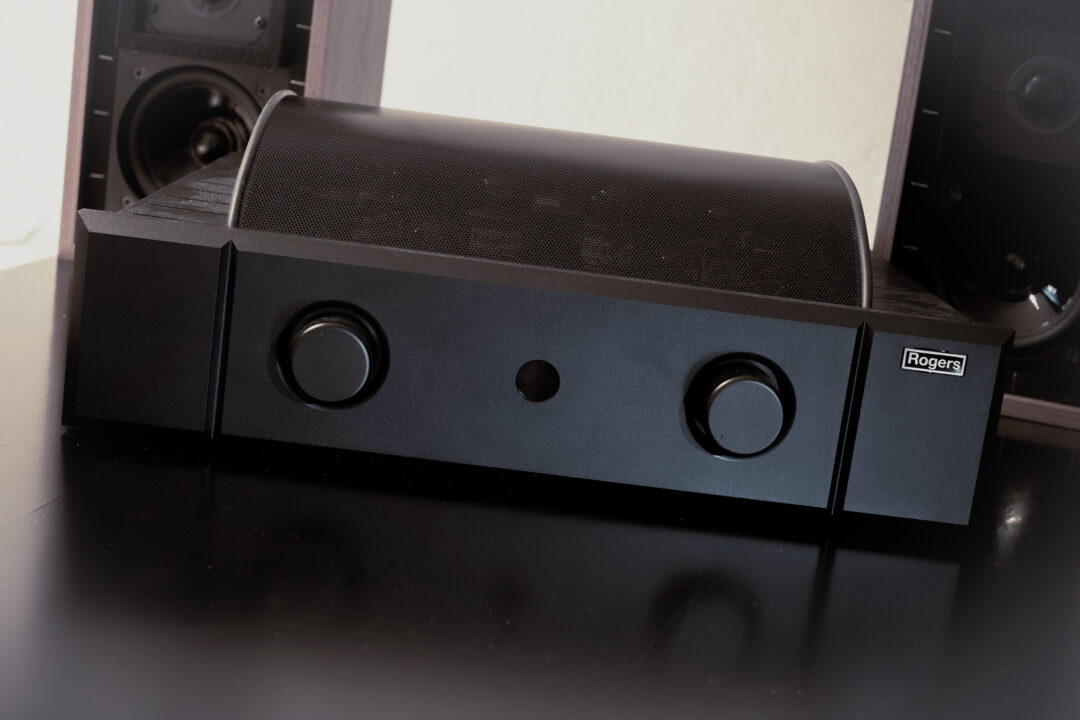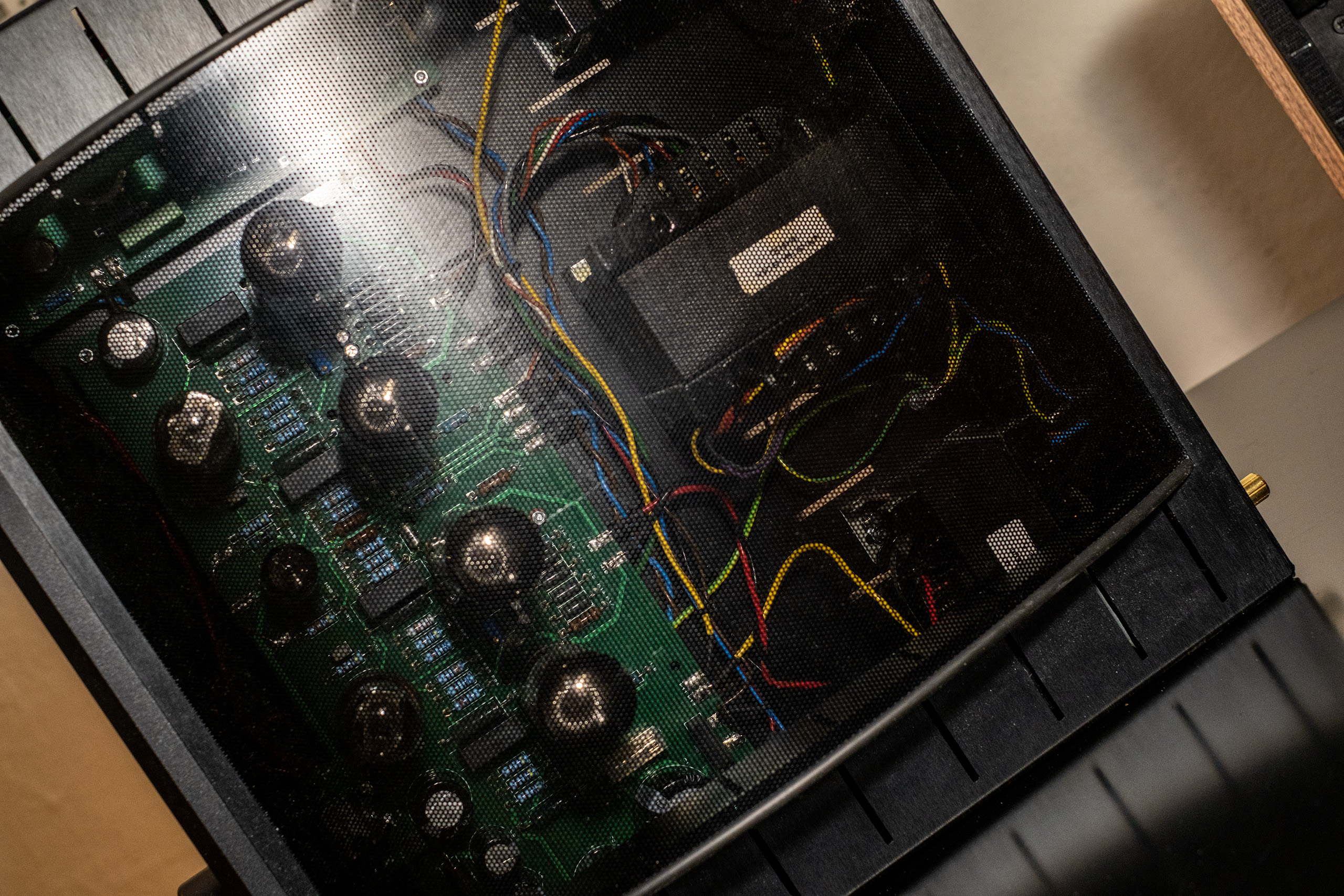I’ve always been fascinated by valve amplifiers. Although the use of valves in amplifiers is basically an anachronism, there is something about the sound from them that I never cease to be excited by.
That’s probably why valve amplifiers are still being made and sold. The sound, that is, that can have some organic qualities that you don’t easily find elsewhere.
That sound is probably also why many people prefer the sound of gramophone records.
Most manufacturers of valve amplifiers today have been doing so for decades. Audio Research, Quad and McIntosh, for example, still work with radio valves. Although they are inefficient, give off a lot of heat, and don’t like all the speakers they are asked to drive.
Rogers, on the other hand, is better known for the LS3/5A, the iconic little speaker also known as the BBC Monitor. What many people don’t know is that Rogers has been building valve amplifiers since 1995. That’s almost 30 years ago, and this is the successor to the original E20a. As it was called back then.
The amplifier was designed for the LS3/5A and the larger LS5/9, but of course it can also be used with other speakers.
The power it delivers from the four radio tubes is no higher than 18 watts per channel, but as always the numbers don’t always tell the whole story.
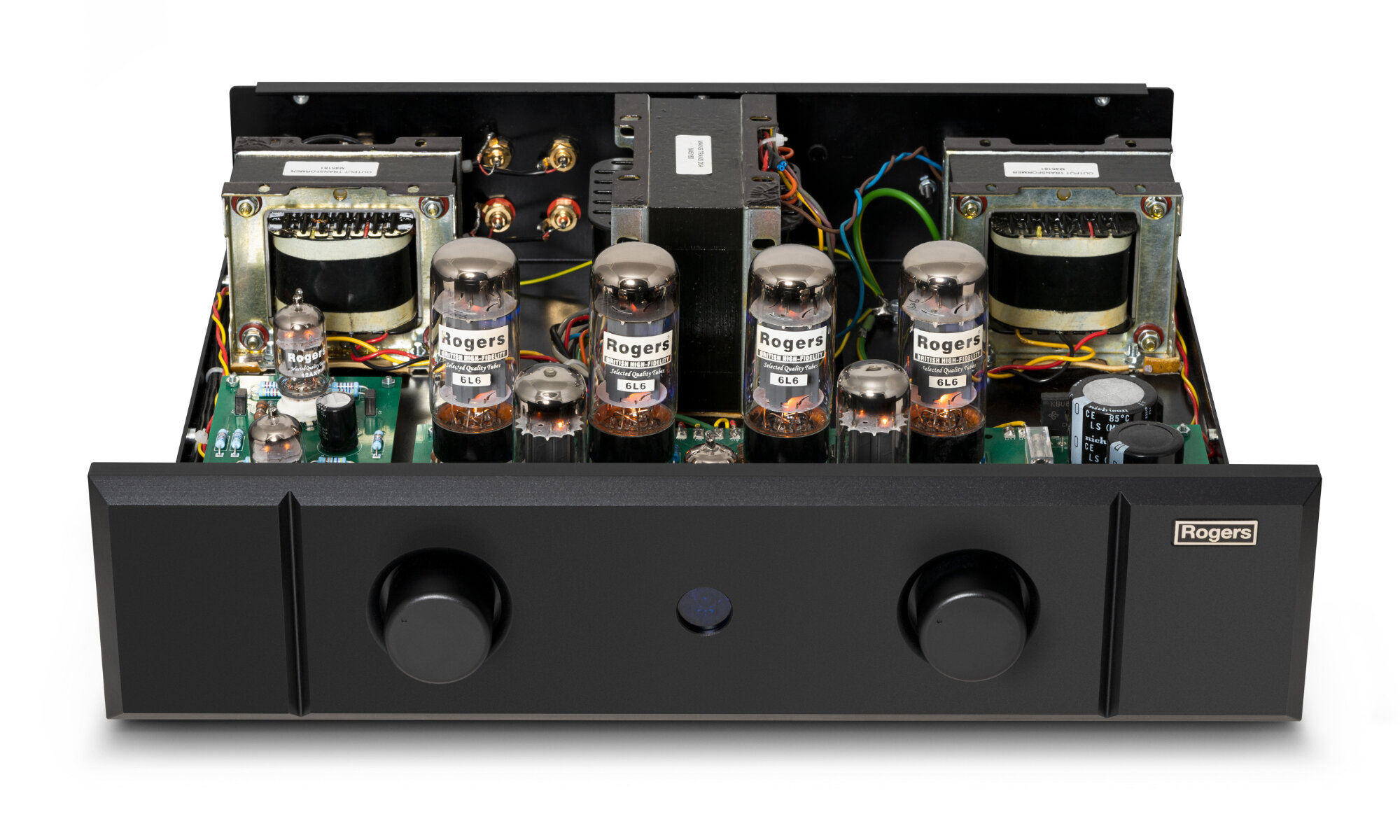
Silver, gold and antimagnetism
Rogers E20a/II is the new version of the amplifier, which is built with four 6L6 radio valves, mounted ‘back to back’ in a so-called push-pull configuration with two valves per channel. The two pairs of valves run in Class A, where the valve is conductive at all times, in other words without switching between off and on. Which is more inefficient than normal class AB and gives lower power (theoretically 25 percent of AB), but is more linear, stable and gives lower distortion.
The amplifier is a pure analog and can be supplied with turntable input for MM pickup, in addition to three line inputs. Rogers has updated the circuitry since the E20a in 1995, and the amplifier is built on an aluminum chassis to reduce the risk of magnetism. The amp also has bigger and better output transformers for increased dynamics and better bass control.
The cables on the inside are oxygen-free copper and all connectors are gold-plated, while the speaker cable terminals on the back are silver-plated for optimum signal transfer.
Photo: Lasse Svendsen
THD
It should be noted that the amplifier’s power of 18 watts per channel is specified at 8 ohms load, and 1 kHz with a harmonic distortion of as much as 3 percent. Total Harmonic Distortion (THD) is the name of the game, and when it comes to valve amplifiers in particular, the figures should be taken with a grain of salt.
That’s because harmonic distortion in a valve amplifier behaves differently from harmonic distortion in a transistor amplifier. Valve amps and harmonic distortion are more about 2nd and partial 3rd order distortion, which generally has a rounder and softer shape that is much more pleasing to the ear.
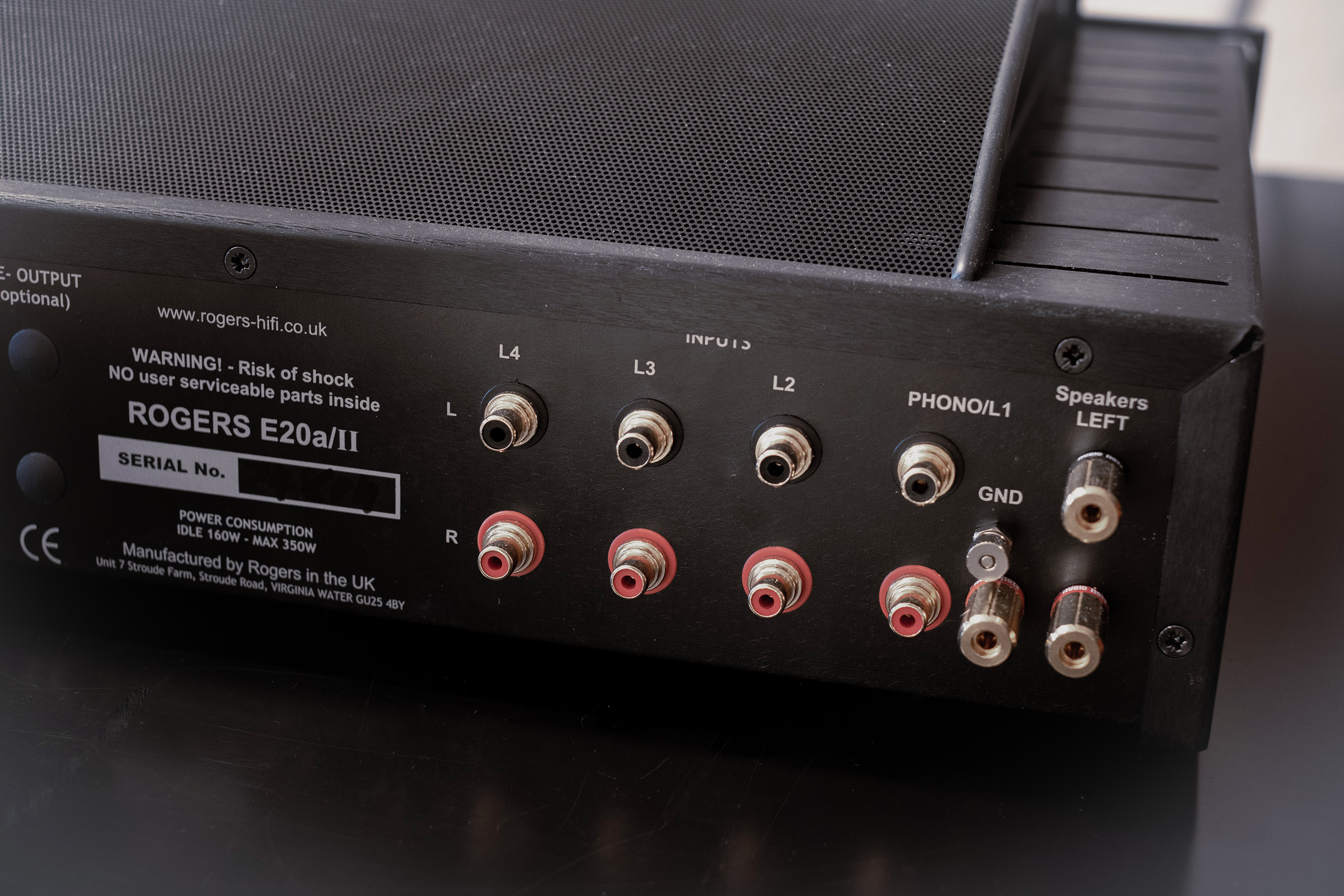
Roger that
The Rogers amplifier has the classic warm sound many associate with valve amplifiers. It makes the sound very easy to like, there is never a coarse or sharp tone coming out of the speakers, and even with 18 watts of power it easily drives speakers like the Sonus Faber Olympica III. Which isn’t the world’s hardest driven 4 ohm speaker, yet thrives best with amplifiers with heavy torque at the bottom.
The piano notes from Keith Jarrett’s trio Up For It don’t sound as focused as from an Octave V70 SE, or as airy as from an Audio Research I/50, but they get a tremendously well-rounded soundstage. Where the lowest octaves in particular are rendered with a fullness and authority not associated with 18 watts.
The little amp is far more potent than the numbers suggest, and it has a good grip on dynamics – even in the bass, although the dynamic contrast isn’t as great as from a V70 SE.
But the sound from the Rogers amplifier is excellent. Double bass is reproduced with fullness and an appealingly warm sound, while cymbals sound surprisingly sharply focused. Al Jarreau’s terrific version of Cold Duck needs an amp with control, bass depth and dynamics. I don’t think the Rogers amp is missing anything here, but there’s more juice and power in the transistor-based Yamaha A-S3200.
Plugged into the smaller Audiovector R1 Arreté, you notice that the amp doesn’t have the depth of the Yamaha amp, because the bass response becomes tamer when you compare the Brit to the Japanese. But connected to the even smaller LS3/5A, something happens in the interaction with the Rogers amplifier.
They suit each other extremely well, and it’s particularly noticeable on the vocals, where the warmth and fullness of the amp merge into a sublime synergy with the small Rogers speakers. Here, though, is not the wildest deep bass, but you big world, where the small speakers get a startlingly pleasant vocal sound, with pure class A from a valve amp.
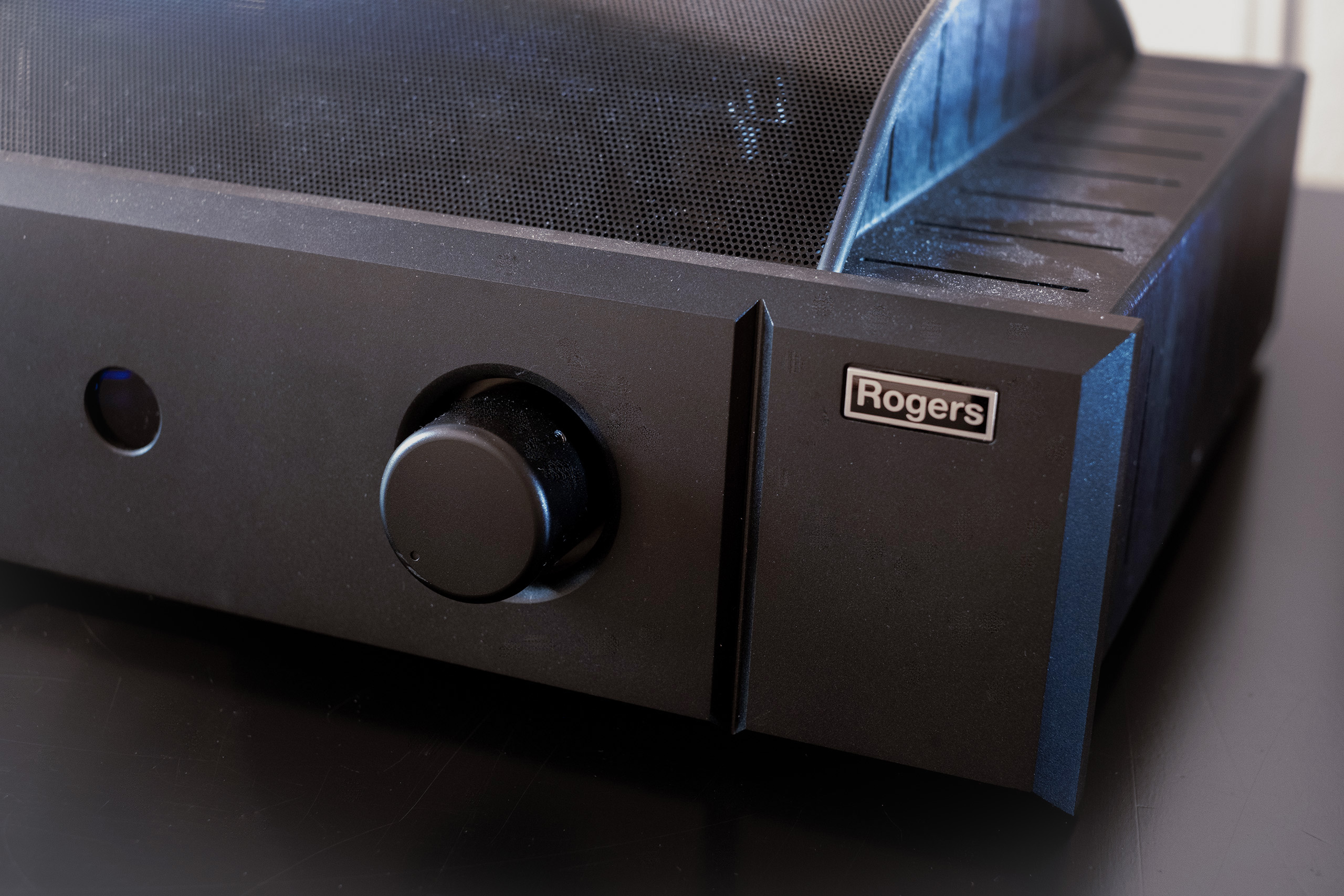
Conclusion
Valve amplifiers are not for everyone. They get hot, the valves need replacing after a few thousand hours, and there are limits to how much power they can deliver. The heat and lack of power are even more apparent on a valve amplifier with Class A output stage, at least on paper, but the Rogers amplifier shows that you shouldn’t believe every number you read. The proof is in the listening, and here the 18-watt tube amp is far more potent than you’d think. More importantly, the sound is actually fantastic. Not unexpectedly, it plays heavenly with the Rogers LS3/5A, but it also thrives in the company of other speakers, as long as they’re not too heavily driven. The Rogers E20a/II is a nice integrated valve amp that you don’t have to be a valve enthusiast to thrive on.

We think
Big, warm and rich sound, reproducing vowels with silky elegance. Limited power, and the phono version has only MM input.
5190 €
Specifications
- Type: Integrated Amplifier
- Power: 2 x 18 w 8 ohm
- Technology: 4 x 6J6GT, 3 x 12AX7 radio tubes
- Connections: 3 x analog unbalanced
- Turntable input: Moving Magnet
- Headphone output: No
- DAC: No
- Network: No
- Other: Remote control
- Dimensions and weight: 45 x 16 x 39 cm / 13 kg
- Web: rogers-hifi.uk
